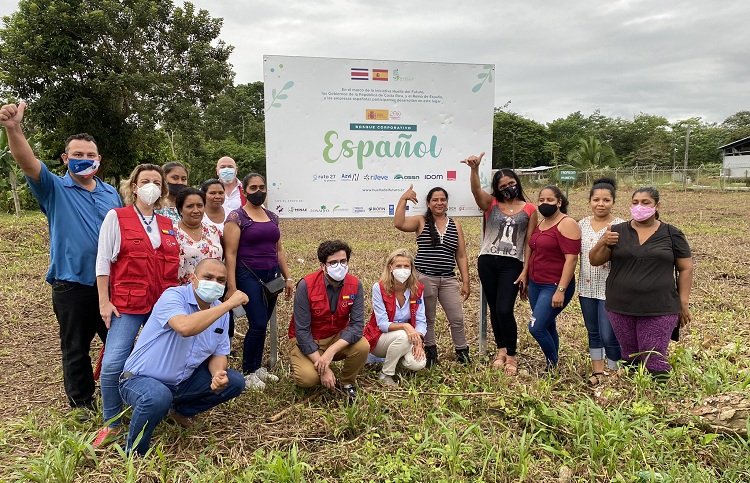The Diplomat
The director of the Spanish Agency for International Development Cooperation (AECID), Antón Leis, concluded this week in Costa Rica his first tour of Latin America and the Caribbean since taking office, a tour that also included Colombia and the Dominican Republic.
The first stop was Colombia, between November 21 and 24, coinciding with the commemoration of the fifth anniversary of the signing of the Peace Treaty. In this country, Leis visited the primary health center and hospital in Soacha -one of the municipalities with the largest number of displaced persons in the country-, which is part of an AECID project to strengthen health care for the migrant and host population.
Later, he went to Tumaco, in the department of Nariño, near the border with Ecuador, where he visited several projects of the Spanish Cooperation in the areas of human rights, historical memory, productive processes or access to water. Back in Bogota, he held a meeting with members of the Truth Commission, attended the event to commemorate the fifth anniversary of the signing of the Peace Treaty, chaired by UN Secretary General Antonio Guterres, and attended a reception at the Colombian Foreign Ministry in which he reiterated the commitment of Spanish Cooperation to peace building.
The next stop on the tour was the Dominican Republic, where she participated in an act of rejection of violence against women and girls, coinciding with the celebration of the International Day against Gender Violence, which took place on November 25. For that reason, Leis participated in the official launch of the project Strengthening the response of the national health system in the Dominican Republic to women, girls and adolescent victims of gender-based violence, financed by Spanish Cooperation and organized by the Dominican Ministries of Health and Economy, Planning and Development.
The tour concluded, between November 27 and 29, in Costa Rica, where, among other things, she visited the Spanish Corporate Forest, which is Spain’s contribution to the Footprint of the Future project, one of the emblematic initiatives of the commemoration of the Bicentennial of the Independence of Costa Rica.
He also held a meeting in the Municipality of La Cruz, located on the border with Nicaragua, to address the migration problem between the two countries. “The migratory problem constitutes one of the priority areas of the recent Advanced Cooperation Agreement signed between Spain and Costa Rica,” said Leis. Around half a million Nicaraguans reside in Costa Rica, where they represent more than 75% of the foreign population of this country in which one out of every ten inhabitants comes from abroad. Until 2018, most Nicaraguans had moved to Costa Rica for economic reasons, but since April of that year more than 100,000 Nicaraguans have entered in search of international protection because of the political crisis and repression in their country.






